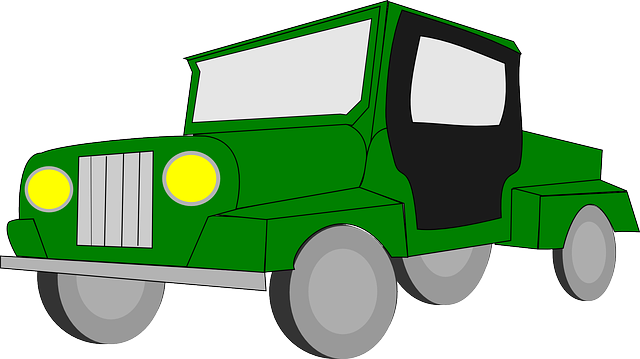Mastering 4×4-repair-RGV (Rio Grande Valley) involves understanding regional challenges and mastering essential skills for maintaining off-road vehicles. This includes tow tool knowledge (winches, chains, slings), efficient repair strategies, tire management (portable kits to rim remolding), hydraulic system proficiency, and regular maintenance practices to ensure year-round performance. Key focus areas are climate-specific repairs, local resource access, and keeping your 4×4 in top condition through routine inspections and proper storage.
In the rugged landscapes where 4×4 vehicles reign supreme, efficient recovery equipment is not just an advantage—it’s a necessity. For those navigating challenging terrains in RGV (Remote Geographical Areas), understanding and mastering recovery tools can mean the difference between a frustrating stall and a successful expedition. This article guides you through essential aspects of 4×4-repair-RGV, from choosing the right equipment to maintaining crucial components for optimal performance.
- Understanding Recovery Equipment: Essentials for 4×4 Repair in RGV
- The Role of Towing Tools in 4×4 Vehicle Recovery
- Choosing the Right Jack for Your 4×4: A Comprehensive Guide
- Tire Repair and Replacement Techniques for Off-Road Vehicles
- Hydraulic Systems: Powering Efficient Recovery Operations
- Maintenance Tips to Ensure Longevity of Recovery Equipment
Understanding Recovery Equipment: Essentials for 4×4 Repair in RGV

The Role of Towing Tools in 4×4 Vehicle Recovery

In the realm of 4×4 vehicle recovery, towing tools play a pivotal role in navigating challenging terrains and facilitating effective rescue operations. These specialized equipment are essential for 4×4-repair-rrv (4×4 repair and recovery vehicles) as they enable them to handle various situations, from pulling stuck vehicles out of muddy ditches to transporting heavy machinery over rough landscapes. The robust design and powerful capabilities of these tools ensure that stranded 4x4s can be safely recovered, minimizing damage and reducing the time required for repairs.
Tow trucks equipped with winches, chains, and recovery slings are common sights in off-road communities. Winches, for instance, provide the necessary pulling power to hoist vehicles over obstacles or extract them from deep ruts. Chains and slings, on the other hand, distribute the load evenly, preventing damage during towing. These tools empower 4×4 recovery specialists to tackle diverse environments, making them indispensable assets in the world of off-road rescue.
Choosing the Right Jack for Your 4×4: A Comprehensive Guide

Tire Repair and Replacement Techniques for Off-Road Vehicles

Tire repair and replacement are essential skills for off-road vehicles, commonly known as 4x4s, designed to tackle rugged terrain. When navigating challenging trails, a flat tire can be a driver’s worst nightmare. Therefore, understanding various repair techniques is crucial for any 4×4 enthusiast. One of the most common methods involves using portable tire repair kits equipped with patches and a small pump, enabling quick fixes on the go. These kits are a game-changer when minutes count and access to a workshop is limited.
For more severe damage or larger tires, replacement becomes necessary. Off-road vehicles often require specialized 4×4-repair-RGV (rim repair and replacement) services due to their unique tire designs and sizes. This may include remolding existing rims or sourcing custom-made ones to ensure the vehicle maintains optimal performance off the beaten path. Efficient tire management is key to a safe and enjoyable off-road adventure, making these skills invaluable for any 4×4 owner.
Hydraulic Systems: Powering Efficient Recovery Operations

Hydraulic systems play a pivotal role in modern recovery operations, especially for heavy-duty equipment like 4×4 repair RGVs (Recovery Vehicle). These sophisticated mechanisms provide the necessary power and precision for effective recovery strategies. By utilizing hydraulic technology, rescue teams can efficiently lift, drag, and maneuver objects with remarkable control, ensuring safety during critical situations.
The efficiency of hydraulic systems lies in their ability to generate substantial force while maintaining responsiveness. This is crucial when dealing with various terrain conditions and the diverse challenges presented by road accidents or natural disasters. 4×4 repair RGVs equipped with advanced hydraulics can quickly respond to emergencies, employing powerful pumps, cylinders, and valves to extricate vehicles from difficult situations.
Maintenance Tips to Ensure Longevity of Recovery Equipment

Regular maintenance is key to ensuring your recovery equipment, such as 4×4 repair RGVs, serves its purpose for years to come. Start by conducting routine inspections to identify any signs of wear and tear or damage. Check all components, including tires, brakes, winches, and lighting systems, for proper functionality and replacement needs.
Proper storage is another vital aspect. When not in use, store your RGV in a clean, dry, and secure location, away from extreme temperatures and harsh conditions that can compromise its integrity. Keep the equipment covered to protect against dust, debris, and UV radiation, which can lead to rusting and premature degradation. Lastly, adhere to the manufacturer’s recommended service intervals for oil changes, filter replacements, and other routine services to keep your recovery gear running smoothly.
In conclusion, mastering 4×4 repair in RGV (Remote and Extreme Environments) requires a comprehensive understanding of recovery equipment. From towing tools and jack selection to tire maintenance and hydraulic systems, each component plays a vital role in ensuring safe and effective operations. By adopting the maintenance tips outlined in this guide, off-road enthusiasts can extend the lifespan of their recovery equipment, making them better prepared for any challenge that lies ahead on rugged terrains. For all things related to 4×4-repair-rgv, these strategies serve as a solid foundation.
